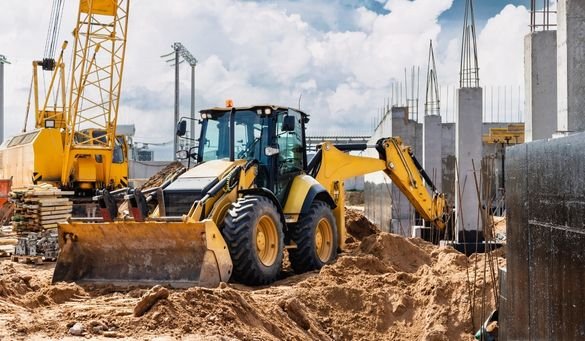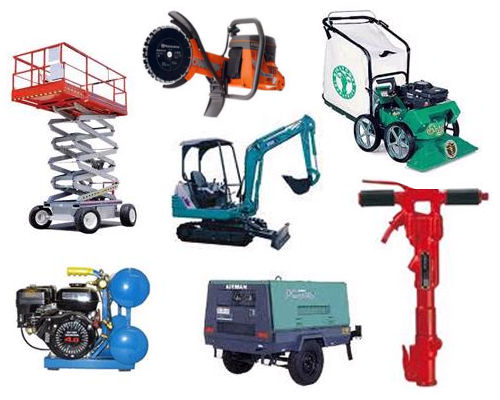Mini Excavator Rental: Compact Machines for Tight Spaces
Mini Excavator Rental: Compact Machines for Tight Spaces
Blog Article
Optimize Your Budget by Understanding the Expenses Associated With Building And Construction Tools Leasings
Understanding the complete extent of costs related to building and construction equipment rentals is crucial for optimizing your spending plan. While the initial rental cost might appear simple, countless additional costs-- such as transport, fuel surcharges, and maintenance-- can swiftly gather, impacting your financial preparation. In addition, understanding numerous fees and the ins and outs of rental arrangements can help stay clear of unforeseen monetary worries. What techniques can be employed to properly manage these costs and guarantee an extra effective rental experience?
Summary of Rental Expenses
When considering building and construction equipment leasings, understanding the linked prices is paramount for efficient budgeting and project preparation. Rental prices can vary dramatically based upon numerous elements, consisting of equipment type, period of leasing, and location. The initial rental fee commonly mirrors the equipment's market demand and its linked functional abilities, influencing the general expenditure.
In addition to the base rental rate, secondary prices may occur, such as transport fees, gas additional charges, and upkeep charges. It is necessary to make up these additional expenses to accurately assess the total price of leasing devices. In addition, the rental period can influence pricing; longer rentals might get approved for discounted prices, while short-term rentals may incur greater everyday fees.

Failure of Rental Rates
A thorough understanding of rental prices is vital for contractors and task managers intending to optimize their spending plans. Rental rates for building devices typically include numerous components, including base rates, time-based charges, and use charges.
Base rates are the core costs connected with the rental of the equipment, frequently figured out by the kind and dimension of the machinery. These prices can differ dramatically, affected by variables such as devices demand, accessibility, and local market fads. Time-based charges, which may be daily, weekly, or monthly, serve to suit different project timelines and rental periods.
Furthermore, rental rates might consist of usage costs, which are applicable when tools is made use of past a defined threshold, guaranteeing that the rental business can account for damage. Seasonal demand changes can additionally impact rental rates, with peak construction periods commonly commanding higher costs.
Furthermore, understanding the rental company's policies concerning upkeep and insurance can provide further understanding into the overall price framework. By assessing these elements, specialists can make enlightened decisions, making certain the option of rental devices aligns with both job needs and budget constraints.
Additional Charges to Take Into Consideration
Recognizing the complexities of extra charges is vital for specialists to handle their general rental costs effectively. Beyond the common rental rates, various supplemental fees can substantially affect the total expense of devices rental. These charges often include shipment and pick-up charges, which can differ based on distance and logistics entailed in transferring the equipment to and from the job website.
Additionally, some rental firms may impose fuel additional charges if the equipment is returned with much less fuel than when rented. It is additionally necessary to recognize prospective cleansing charges, Clicking Here specifically for specialized equipment that calls for complete maintenance after use.

Thoroughly assessing the rental arrangement and clarifying these extra fees upfront can assist contractors stay clear of unexpected prices and ensure that budgets continue to be intact throughout the job lifecycle.
Repair And Maintenance Costs
Regular maintenance and repair costs are frequently ignored factors that can dramatically influence the general price of construction tools services. When renting out equipment, it is vital to think about not just the rental fees but likewise the possible costs related to maintaining the machinery in ideal operating condition.
Several rental business include basic upkeep as part of the rental agreement; nonetheless, a lot more unanticipated malfunctions or comprehensive repair work can cause extra costs. It's vital to examine the rental agreement carefully to recognize what maintenance services are covered and what obligations drop on the occupant.
Furthermore, tools that is not well-kept can cause inefficiencies on the work website, potentially enhancing and creating delays job prices. To alleviate these threats, it is a good idea to conduct routine assessments and keep open communication with the rental provider regarding any issues that develop throughout usage.
Insurance Coverage and Obligation Costs
Insurance and obligation prices are essential components that can substantially influence the total expenditure of construction equipment services (boom lift rental). These prices ensure that both the Get More Info rental firm and the client are safeguarded from prospective financial losses emerging from crashes, damages, or theft throughout the rental duration

In addition, clients must recognize any deductibles or exemptions in the insurance coverage, as these can influence potential out-of-pocket costs. Understanding the conditions of any type of insurance protection is vital to prevent unforeseen prices. Inevitably, budgeting for insurance and responsibility costs can help make certain a smoother rental experience and secure versus financial dangers related to building projects.
Final Thought
In final thought, a comprehensive understanding of the expenses connected with construction equipment leasings is necessary for efficient budget plan administration. By analyzing rental rates, added costs, upkeep expenditures, and insurance people, demands and organizations can minimize unanticipated expenses. This tactical strategy not just enhances cost-effectiveness but additionally guarantees that jobs progress efficiently and effectively. Inevitably, educated decision-making pertaining to tools services adds to the overall success of building and construction ventures.
Rental prices can differ substantially based on several aspects, consisting of devices kind, period of leasing, and place (forklift rental). The rental duration can influence rates; longer services might certify for reduced rates, while short-term services could sustain higher day-to-day fees
By carrying out detailed study and engaging with trusted rental business, contractors can efficiently navigate the complexities of rental pricing, ultimately maximizing their financial resources.
Beyond the conventional rental rates, numerous auxiliary costs can considerably influence the complete cost of tools rental. Rental firms often give liability insurance coverage that construction equipment list covers injuries to third parties or damage to residential property, while equipment damage insurance can cover the price of repair work or substitute if the rented devices is harmed.
Report this page